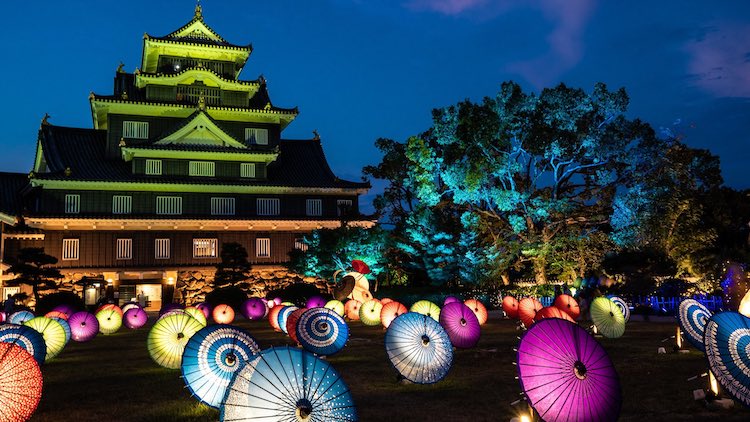Capturing Japan’s Beauty
Japan is a land of enchanting beauty, encompassing ancient temples, breathtaking countryside, and vibrant city life. Yukari Mitani, a dedicated photographer, embarks on journeys across his homeland to capture and share the splendour of its most picturesque locales.
The Tale of Okayama Castle
Okayama Castle, affectionately known as “Crow Castle” due to its dark façade, boasts a rich and storied history. Built-in 1597 by the Sengoku period daimyo Hideie Ukita, it served not only as a military stronghold but also as a hub for merchants and artisans to gather and collaborate on the growth of Okayama. Subsequently, Hideie was arrested and exiled, leading to the castle’s ownership passing to another daimyo, Kobayakawa Hideaki.
Resilience Amid Destruction
The ravages of World War II took their toll on Okayama Castle, reducing much of it to ruins. However, two watchtowers managed to survive, and in 1966, the remaining complex was reconstructed in concrete. The watchtowers earned recognition as Important Cultural Properties by the National Agency for Cultural Affairs.
A Nighttime Spectacle
Today, Okayama Castle stands as a prominent tourist attraction, drawing visitors from near and far. Mitani’s photographic prowess beautifully showcases the castle’s nighttime allure, captured during an exhibition featuring a “dreamlike flower garden” of illuminated blooms. The façade, illuminated to perfection, was a sight to behold, adorned with colourful bangasa (Japanese paper umbrellas) that displayed their intricate colours and designs.



Source: Photos of Japan’s Okayama Castle Showcase Its Enchanting Beauty
You may also be interested in
The Schloss Blühnbach castle in Austria
Schloss Blühnbach is a hunting castle in the Austrian Alps dated from the 17th century. It was extended in 1911 by Archduke Francis Ferdinand; it also includes his art and antiques. The reigning Archbishop of Salzburg constructed it in the early years of the 17th century.
